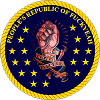SourceFury at ultra-Orthodox Jews after girl abused
BEIT SHEMESH: The battle over religious extremism in Israel now has an unexpected public face - that of a blonde, bespectacled eight-year-old girl.
She is Naama Margolese, the daughter of US immigrants who are observant modern Orthodox Jews. A television program at the weekend told the story of how Naama had become terrified of walking to her primary school in Beit Shemesh, a Jewish city between Jerusalem and Tel Aviv, after ultra-Orthodox men spat on her, insulted her and called her a prostitute because her modest dress did not adhere exactly to their more rigorous dress code.
The country was outraged. Naama's picture has appeared on the front pages of all major Israeli newspapers. Although the Prime Minister, Benjamin Netanyahu, said on Sunday that ''Israel is a democratic, Western, liberal state'' and pledged that ''the public sphere in Israel will be open and safe for all'', there have been days of confrontation.
Ultra-Orthodox men and boys from stringent sects have hurled rocks and eggs at the police and journalists, shouting ''Nazis'' at the security forces and assailing women reporters with epithets like ''whore'' and ''shikse'', a derogatory Yiddish term for a non-Jewish woman or girl.
For many Israelis, this is not a fight over one girl's walk to school. It is a struggle that could shape the character and soul of the country, against ultra-Orthodox zealots who have been encroaching on the public sphere with their interpretation of modesty rules, enforcing gender segregation and the exclusion of women.
The battle has grown increasingly visible. Orthodox male soldiers walked out of a ceremony where female soldiers were singing, adhering to what they consider to be a religious prohibition against hearing a woman's voice; women have challenged the seating arrangements on kosher buses, serving ultra-Orthodox neighbourhoods and some intercity routes where they are expected to sit at the back.
''We are working to save our city and to save our homes,'' Dov Lipman, 40, a local activist, rabbi and modern ultra-Orthodox who moved to Beit Shemesh from the US seven years ago, said. Seizing on the public mood of rejecting ultra-Orthodox bullying, Mr Lipman and supporters have been lobbying parliament, organising protests and working with a media consultant. He said that is how Naama's story came out.
In Ramat Beit Shemesh B, signs on buildings call for modesty, exhorting women and girls to dress in buttoned-up, long-sleeved blouses and long skirts. Outside a synagogue, a sign requested that females cross to the opposite sidewalk and not tarry outside the building.
Naama's school opened in September in an area with a large community of English-speaking observant Jews that borders on the strictest ultra-Orthodox neighbourhoods. She soon found she had to run a gantlet to get to school, even dressed in long sleeves and long skirts.
Riots broke out this week when the police accompanied media crews into Hazon Ish Street, where Naama's tormentors are believed to have come from. Hundreds of men and boys poured out of the synagogue and a seminary holding signs calling for the exclusion of women.
Many of the ultra-Orthodox agitators blamed the media for the unrest, saying they had come into ultra-Orthodox neighbourhoods to sow hatred and persecute residents for their beliefs.
Meanwhile, some residents insisted that Beit Shemesh was a tolerant city but defended some gender separation and modesty on religious grounds.
''I think women are very poorly treated in Western society,'' said Cindy Feder, 57, from Ramat Beit Shemesh A. She came to Israel from New York in 1970. Ms Feder said the objectification of women on billboards made her sick.
Segregation of women, 'modest' clothing, discrimination on buses, etc. It doesn't appear that the problem with the ultra-Orthodox is going to go away any time soon. These sects have huge numbers of children.

 Commander of the MFS Darwinian Selection Method (sexual)
Commander of the MFS Darwinian Selection Method (sexual)